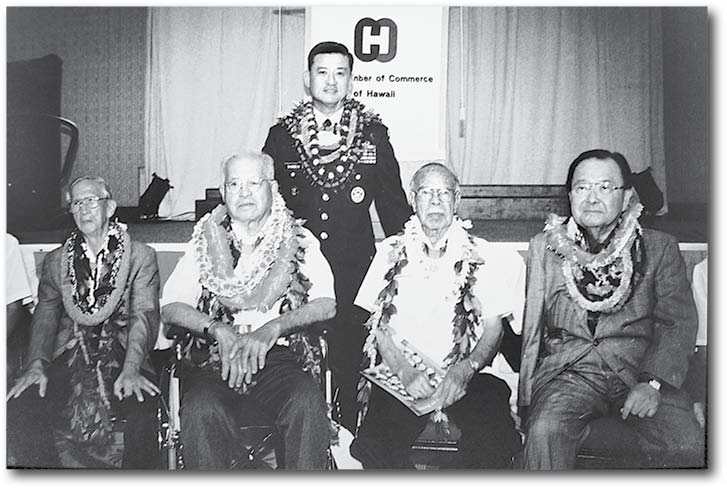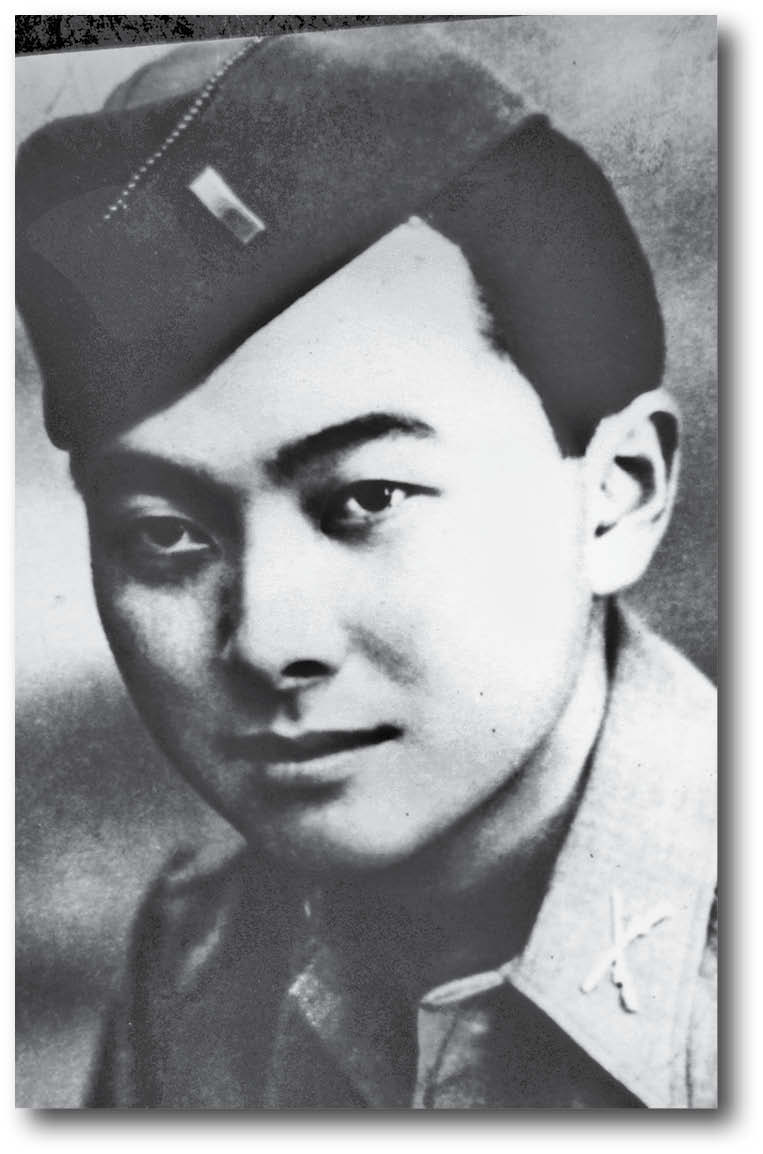
In June 2000, 22 heroic soldiers had lesser medals upgraded to the Medal of Honor. General Shinseki attended the Medal of Honor Salute, which included Hawaii’s Senator, Daniel Inouye (far right).
Nov. 11 was Veteran’s Day, a time to honor those men and women that have served in the armed forces. One of those veterans served his country as a soldier and then as a legislator becoming an icon and revered in his home state of Hawaii. Inouye was born in the Territory of Hawaii to a Japanese immigrant father and a mother who was born in Hawaii to Japanese immigrants. He was what was called Nisei, a second generation Hawaiian born Japanese American.
On Dec. 7, 1941 Japan attacked the naval base at Pearl Harbor and other military installations on the island of Oahu. Inouye a 17-year-old high school student was a Red Cross medical aide. He would assist in caring for the wounded. Inouye wanted to be a surgeon and planned on going to medical school after graduation.
Martial law was declared and a military government took over control of the islands from the civilian government. Everyone of Japanese ancestry was suspected of collaborating with the enemy. Over 100 were immediately arrested as alleged spies. Japanese immigrants living near military installations were forced to move. Their houses were searched and they were forced to turn over guns, cameras or anything that could be used for espionage or sabotage. Japanese-Americans in the Territorial Guard were dismissed from service. Those already in the National Guard were shipped to a military base in Wisconsin without their weapons. Japanese-Americans were classified as “enemy aliens” and unfit for duty for the draft and enlistment purposes.
Unlike the Japanese in California who lost their property and were sent to internment camps, the Japanese in Hawaii were spared imprisonment due to logistics. The Japanese population in Hawaii was 160,000, one third of the territory’s population. There were not enough ships to send the Japanese to the mainland and imprisoning the Japanese on Hawaii would strip the territory of much of its skilled laborers. Japanese-Americans petitioned the government to allow them to serve in the military. They bought war bonds, cooperated with authorities and volunteered to work for the military digging ditches, stringing barbed wire and making roads.
In 1943 the ban of Japanese-Americans serving in the military was lifted. A call for 1,500 volunteers went out in Hawaii. Within a week 4,000 had applied to enlist, the list growing to 9,000 within a month. Dan Inouye dropped out of pre-med at the University of Hawaii to enlist. He would join the segregated all Nisei 442nd Regimental Combat Unit. The unit would see action fighting the Germans in Italy and France.
Dan would be promoted to Sergeant and was a platoon leader when his unit went into action during the brutal Rome-Arno campaign in Italy in 1944. After D-Day his unit was sent to France where they fought valiantly to rescue the “Lost Battalion” made up of Texans who were trapped behind enemy lines. For his service in France, Inouye was awarded the Bronze Star.
In April of 1945 the 442nd was back in Italy. Inouye was leading an assault on a heavily fortified ridge known as Colle Mussatelo near the town of Terenzo. Inouye’s men became pinned down by machine gun fire from three different emplacements. Inouye was shot through the stomach. He ignored the wound and led his men up the ridge taking out one of the machine gun nests with a grenade and his Thompson submachine gun. Inouye refused medical treatment and rallied his men for an attack on the second gun emplacement. After destroying the second machine gun, Inouye collapsed from loss of blood.
While the third machine gun concentrated its fire on his men, Dan began crawling up the ridge to within 10 feet of the machine gun. Dan stood up to throw a grenade when a German infantry man fired a rifle grenade at Inouye striking him in his right elbow and knocking him down. Inouye looked over at his right arm which was nearly severed and saw the live grenade still clenched in his hand. After warning his men who were trying to come to his aid, he grabbed the grenade with his left hand and tossed it into the third machine gun nest. He stumbled forward shooting his Thompson one handed until he was struck in the leg by an enemy bullet. He lost consciousness tumbling down the ridge. He had destroyed the third machine gun.
For his actions Inouye earned the Distinguished Service Cross and a Purple Heart. The 442nd was one of the most decorated outfits during World War II. Miraculously, Inouye survived his wounds. His right arm was amputated ending his dream of becoming a surgeon. Dan would return to Hawaii where like many returning soldiers took advantage of the G.I. Bill to go to college. He would study political science and law. He became a lawyer then entered the political arena.
In 1953 he was elected to the Territorial House of Representatives. He served two terms there and was elected to the Territorial Senate. After Hawaii became a state in 1959, Inouye won a seat in the US House of Representatives. Inouye was the first Japanese American to serve in Congress. He would have a distinguished career in the House and as a United States Senator. In 2000 President Bill Clinton upgraded Inouye’s Distinguished Service Cross to the Medal of Honor along with other members of the 442nd. It was believed that the Nisei heroes had been denied the Medal of Honor due to prejudice at the time of their service. Inouye would serve in the Senate until his death in 2012. President Barack Obama awarded him the Presidential Medal of Freedom posthumously.


